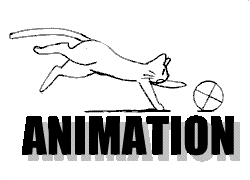this is a wip, i will add video and images in a couple days. keep in touch.
today i am going to reveal to you some of the process behind my first ever short animated film. i started this at 18 years old and finished it when i was 19, i was one of the youngest in my class and some admitted one of the most talented. yes i just fucking said that. i'm very proud of my skill level okay? i'm basically just gonna write about every single thing i did at animation school. it was only a year, i know how to animate but it wasn't no calarts bs.
part one: learning the foundations
add cannibalism pt 1, explosion, wombo react, step on a box, frog jump, flour sack, ball bounce (if you have it), and also some of the cinematography studies. also the character studies, but only of ghoul. also add life drawings
before making a film, i first learned how to animate. charm, appeal, character, and story elements all have to come from inside, they didn't teach us any of that. i started from the very basics of a ball bouncing all the way up to a full human body. we took life drawing classes which were the most beneficial to me- they helped me understand how to convey the 3D shapes of the human body on a 2D plane, and how to simplify the arcs and contours of the human form. drawing is my true passion, not animating, so getting to study the human body like never before was a really eye opening experience. the professor even complimented my work and was impressed that i had never taken a life drawing class before. score.
part two: getting ready to get ready to make a film
concept art, character concepts, scripts, character sheets.
this step was really a lot of fun, there were so many options to explore and it really came down to picking the perfect film idea. i scared my director because in the early days i didn't know what i wanted, and i pressed him about what the limits were for the film; he told me about a previous student who wanted to create a film about a serial rapist and asked if that's what i had in mind. i quickly came to my senses and decided i needed to do something in the middle of cartoony and horrific. i had a vague idea of what i wanted- my original idea was also about stalking, but it was supposed to be a grungy psychological thriller with blood and screaming and trippy visuals. i pitched this idea, but it was too long and i knew i wasn't good enough to pull it off, but most of all i knew people wouldn't like it. so i came up with a better idea.
part three: getting ready to make a film
add as many early storyboard concepts as you want. also add practice story boards if you want. also add recordings of advice from mark
this step was the most confusing. i hadn't created a good script for myself and i barely knew anything about layout, composition, story, or character. it was all over the place, none of it was compelling or made any sense. my director gave me lots of advice, i felt like he had a special interest in my project but maybe i was just telling myself that. we would work all week on our boards, and then watch them together in a theater. it was nerve wracking. but every time we did another screening i got less nervous and liked my film more and more. by the final version, i fell in love with my film.
part four: animatingd
i wanted to quit. i was good for about 3 weeks and then we had 7 more weeks and i wanted to quit. i was there from 9-5 every day animating. some days i'd just sit there and stare at my screen for a couple hours and then i'd go home. the best part of this experience was the notes id recieve from my instructors, little nuggets of animator wisdome that made my crappy animations look flawless. by the end i got pretty good and the ones i saved for last ended up being my favorites. i had to cut some corners but if you don't know what you're looking for, you won't see it. the rest of the film is pretty distracting so my lines didn't end up being much of a concern.
actually a really notable part of this process that i'm going to continue using for my own projects was the schedule. it was strict and it was organized and i loved it, it helped a lot to be able to see my progress in a compressed way. you could also stalk other peoples' progress which i loved. this was our process:
- blocking (keyframes only)
- checked by instructor
- rough (all or almost all frames drawn and fully animated)
- checked by instructor
- final (all frames drawn and any errors are fixed, and usually traced with a clean line but i left my animations rough)
- approved by instructor
this process kept things running smoothly and never left animators to suffer completely alone. it was nice to know you always had someone there to help. on a real film, our instructors jobs would be called 'animation checkers' and you can see those people listed in the credits of a film, their job is very important and very helpful to the animator. the hardest part is having to do everything by yourself.
part five: comp
all background art
this step was a welcome
 THIS IS NOT STALKING: BEHIND THE SCENES
THIS IS NOT STALKING: BEHIND THE SCENES